goal line offense

FORMATION NOTES: Rutgers uses a blizzard of different fronts but spends the game in a nickel with said nickel over the slot almost all the time, and then that guy gets nosy in the box almost all of the time.
Here they've shifted their line over to the strength of the formation and the nickel is the littlest LB closes to the center of the field.
SUBSTITUTION NOTES: Usual at QB, obviously. Edwards got more carries earlier than usual; seemed like Corum may have been ill and Michigan was trying to limit his usage. At TE, Schoonmaker went out for a portion of the game and this led to more Loveland snaps. At OL, Persi took over for Hayes. On some goal line snaps Persi went out, El-Hadi came in and Keegan kicked out to tackle. Also El-Hadi got the last drive with the starters when Keegan got dinged.
WR saw more rotation with Wilson out. Walker and Morris both got targets and Anthony was a bigger part of the gameplan. No Clemons.
[After THE JUMP: a much more interesting defense]

A few weeks ago I drew up a pass from early in the Michigan Spring Game to demonstrate how Josh Gattis has learned some Joe Moorhead tricks for using vertical space to open up room for his playmakers underneath. In the thread for that a user named UMmasotta asked an excellent question: What does Gattis do when field position takes away verticality?:
I'm curious what happens in red zone situations? I know Brian likes to say there's no such thing as red zone offense but if one of the core principals is to put vertical stress on the defense and said vertical stress is limited due to the proximity of the endzone, what does Gattis do? Obviously, every offense has to deal with shorter, goal-to-go situations. Just wondering if Gattis starts to look like everyone else in those situations or whether there is a "speed in space" concept that he can deploy there as well.
Gattis isn't going to put his best red zone plays on tape in a scrimmage, but we got to see at least one snap from close range that demonstrates how Gattis is still applying this same concept of isolating speedster in space. It's this run from the three-yard line that got halfway there, and almost certainly would have scored but for a little walk-on running back who momentarily thought he was Ben Mason.
Gap's that way—>, kid.
There's a lot to unpack here so bear with me. As Jim Brandstatter notes, they're in a "Harbaugh" look, i.e. three tight ends or "31" personnel. Unlike Harbaugh looks from Stanford or Michigan 2015-'17, the quarterback's in the gun, and unlike in 2018, the running back is in a standard gun spot as opposed to the pistol (behind the QB) setup they favored last year.
Running back placement is often a sign of offensive intent. A back beside the quarterback will be coming into the handoff/mesh point diagonally, i.e. an angle for running off-tackle. Move the running back behind the QB and you make that angle more downhill, threatening interior gaps. The pistol formation puts that RB in an "I" stance, threatening both sides of the formation equally. Some coaches (e.g. James Franklin) even have the back a little bit in front of the quarterback, creating a completely horizontal cross that's helpful for running out sideways.
You are, of course, by no means limited to running on these angles; it just means your back is going to have to redirect his momentum to go somewhere else. In our goal line play Gattis has aligned his RB even with Patterson to show the defense a likely attack off the side with two tight ends. Last week we went over a pin & pull play that attacks from a similar alignment.
Gattis is going to attack the backside "A" gap here, but he wants that edge run to the frontside in the defense's minds:
Offense is on the bottom now because I want that one coach to stop DM'ing me about it.
The plan for getting into that A gap is to "Trap" or "Wham" (the word doesn't matter*) block with Nick Eubanks. This is some 2015 Harbaugh stuff that we haven't seen much of the last few years. It's similar to the split zone play they ran a lot last year as a primary counter, where the tight end comes across the formation and thwacks a defender who thinks he's getting optioned, whereupon the ballcarrier slips behind the block. This time they're letting the backside linebacker, Devin Gil, blitz right up that gap. He'll meet Nick Eubanks slipping across the formation, get sealed on the hash, and leave plenty of room behind Ruiz/Onwenu to set a path to the endzone.
So far this is pretty standard stuff—barely any Gattising at all. But that's not all that's happening here. Shea's looking at something. And there's someone else in the backfield. Someone pretty fast. And there's a sunlit region to explore.
[After THE JUMP: Enough with the thwack blocks; show me the #SpeedInSpace part!]
-------------------------------------
* [Some coaches say a "Trap" block is when a TE or FB hits his target horizontally while a "Wham" block is when he makes vertical contact. Others say the difference is a trap happens outside the tackles and a wham is inside. Surely this will elicit a response from Space Coyote et al. in the comments; personally I like "Wham" because of the line in Suffragette City.]
-------------------------------------
Al Borges CMU press conference:
"He's a third play guy. You guys have heard me talk about the third play, right? He's a third play guy."
Devin Gardner's ridiculous redzone efficiency last year has gone to ludicrous this year. The standard answer we've been giving for this is "well his legs and size" but there's been more to it. I grabbed this one play from the ND game because it shows several things that Gardner and Borges have been doing to defeat what should have been one of their toughest redzone opponents.
The play:
What you saw: Michigan gets a 1st and goal from the 2 yard line after a pass interference. They line up in…is that an unbalanced formation? Then Devin checks out of it, runs what seems like an option play, then dives through the whole thing suddenly for the score. Afterward we learn Hoke was trying to call timeout.
Play the First: Ace 2TE Twins Unbalanced HB Dive:
It is unbalanced: Funchess (on the l.o.s. just outside the left hash) is covered by Reynolds, and Schofield is an eligible receiver would be eligible if he had a non-OL number on. There's also some epic space between the end (Sheldon Day) and the linebacker to his side (Shembo).
The middle linebackers are seeing this and pointing. Let 'em; we're motioning to something else anyway.
[after the jump]
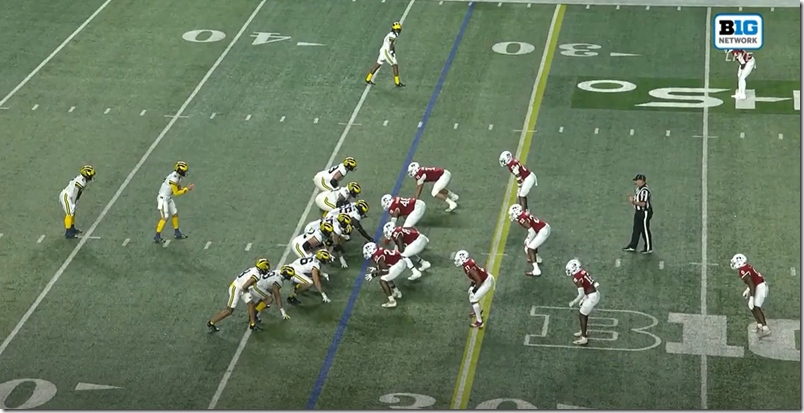
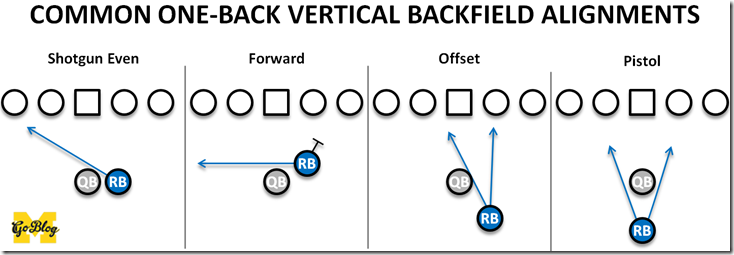
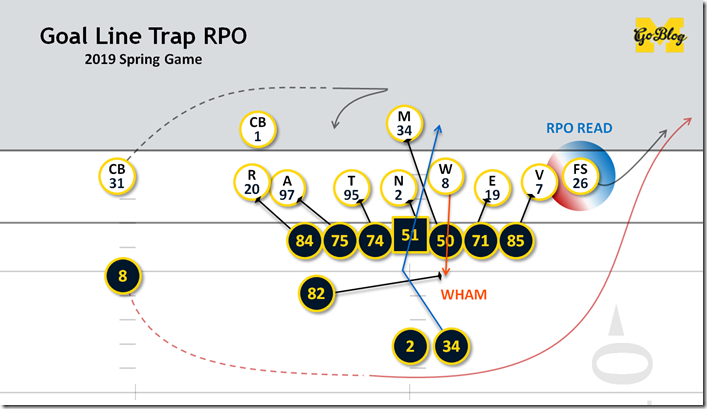
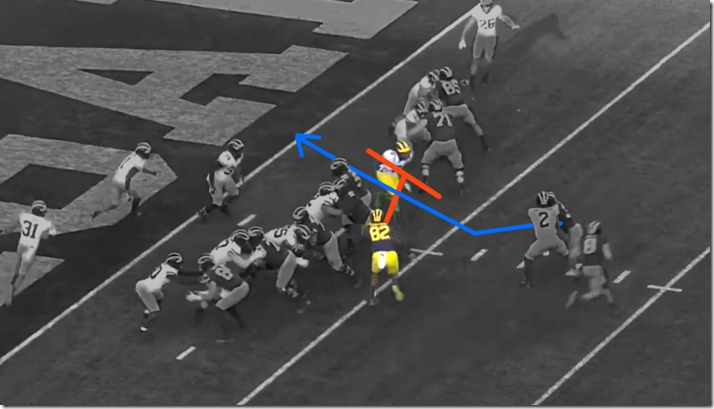
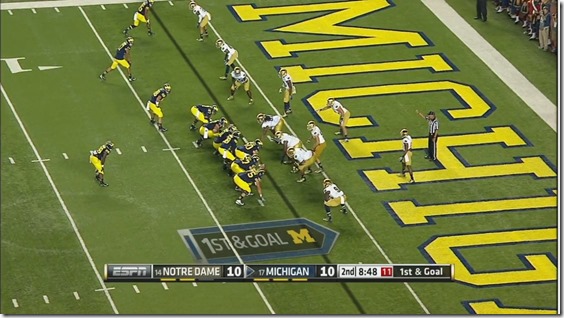
![wwwt[4] wwwt[4]](https://mgoblog.com/sites/mgoblog.com/files/wwwt4_thumb.gif)
31